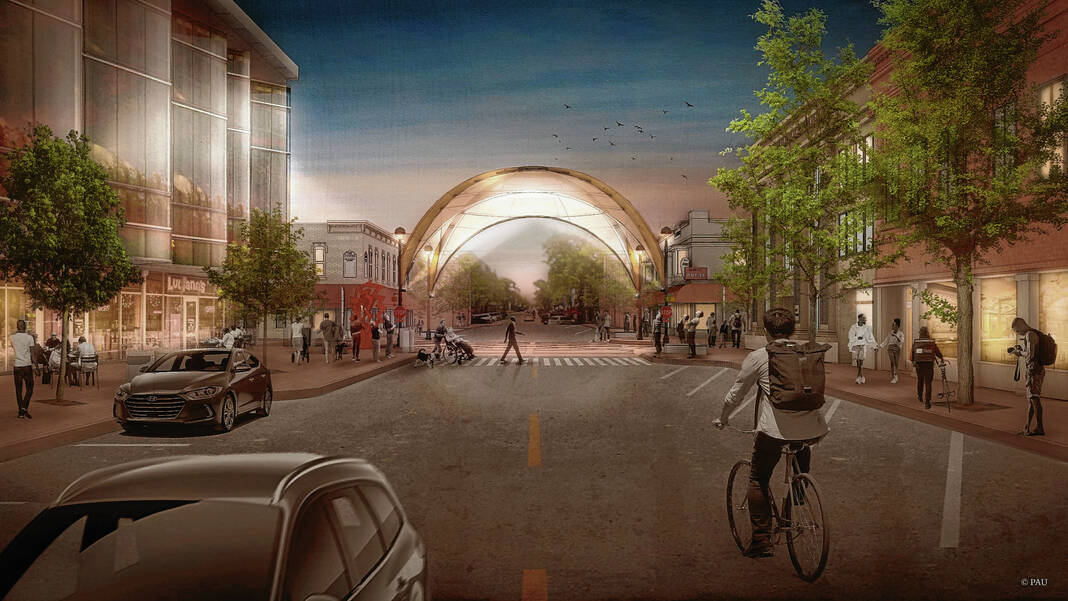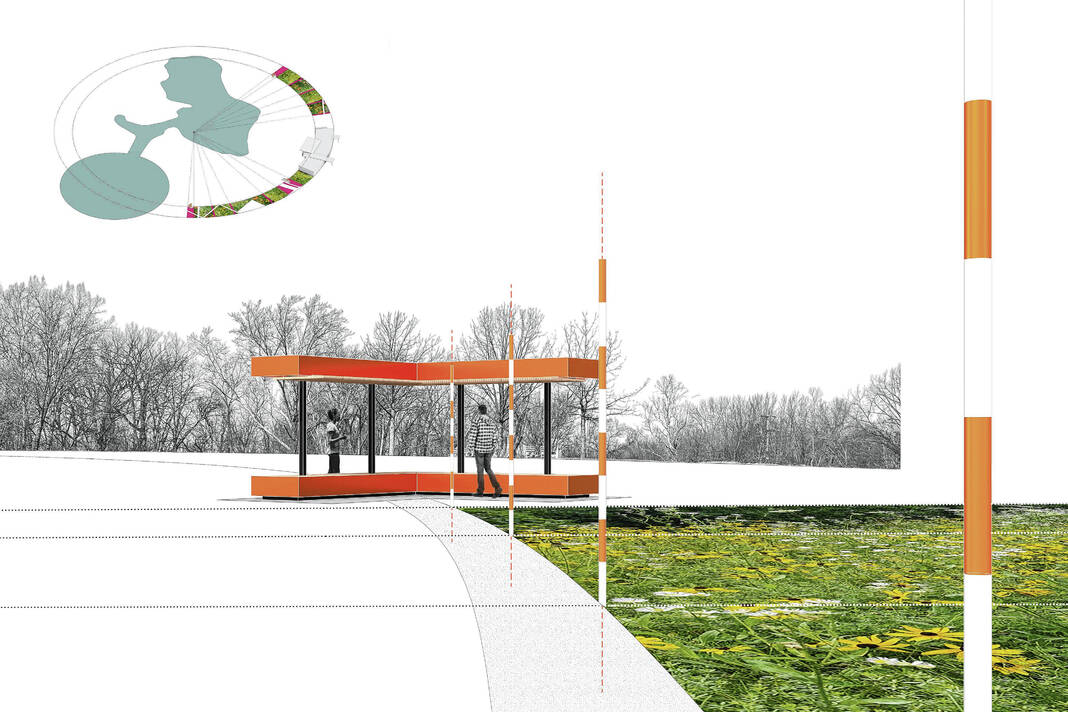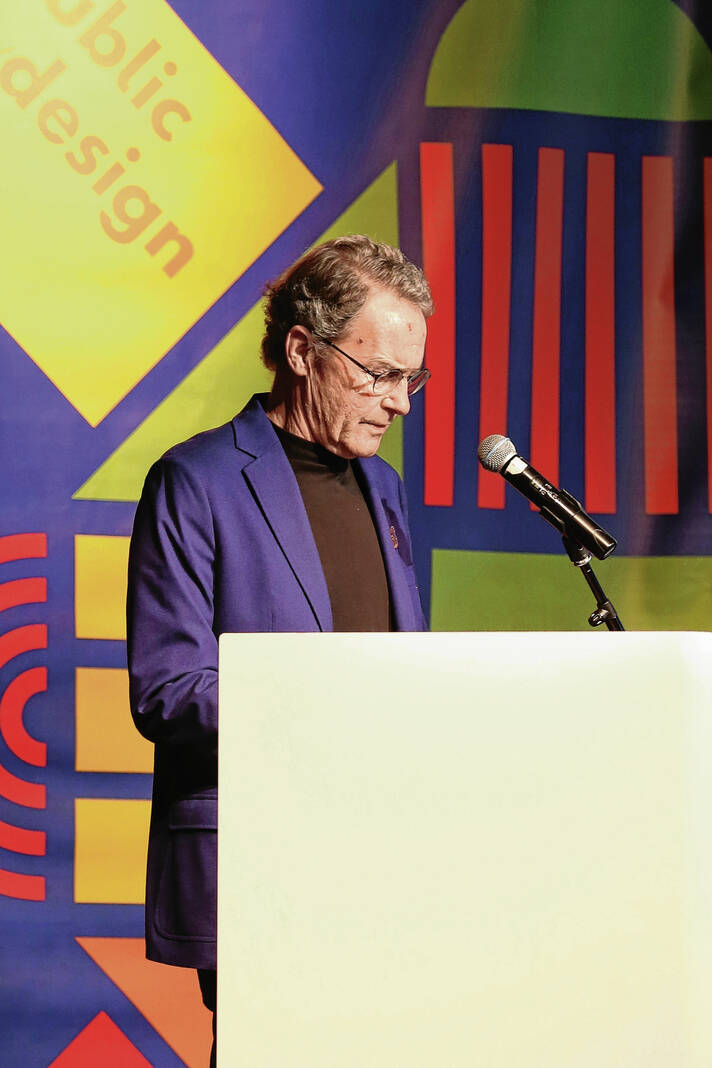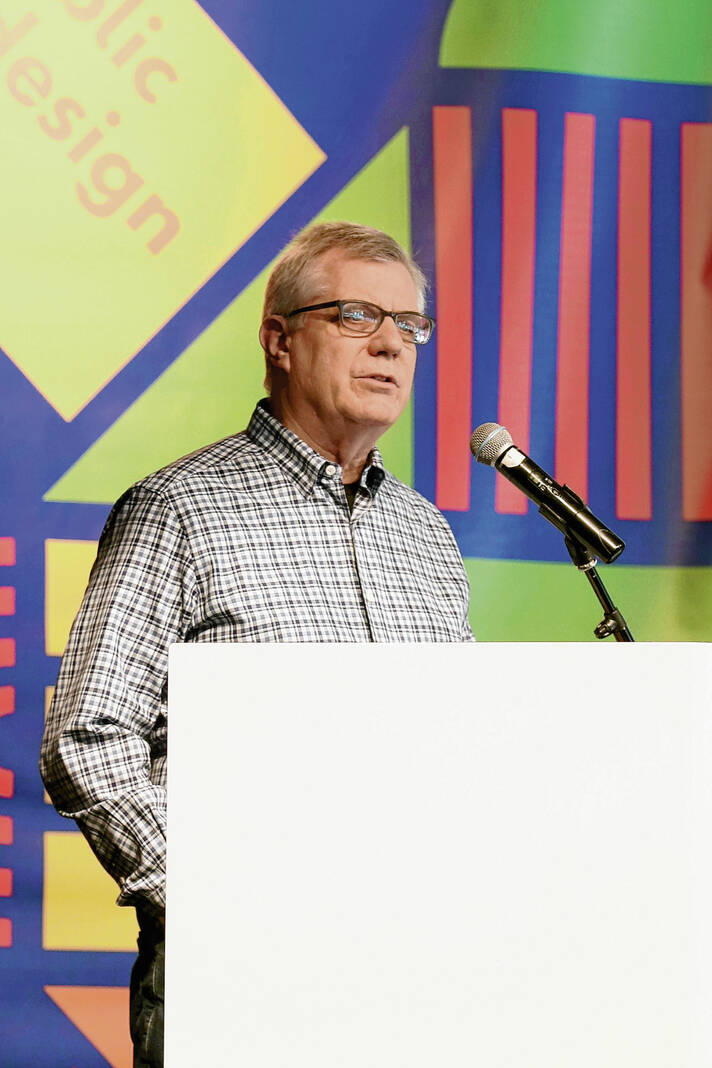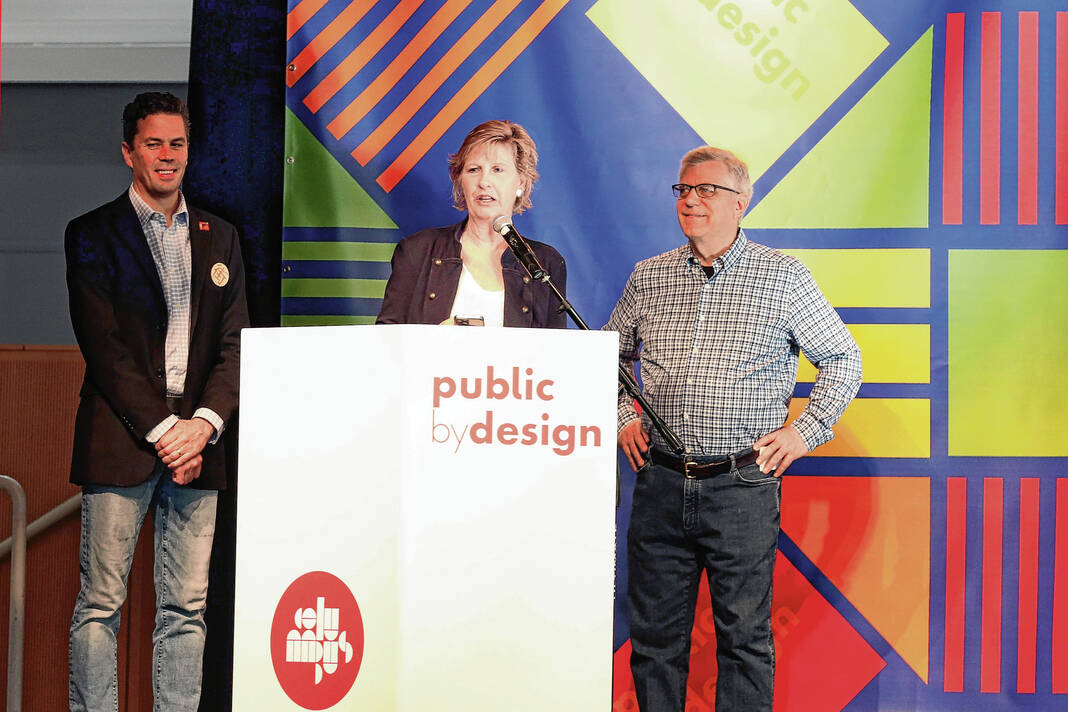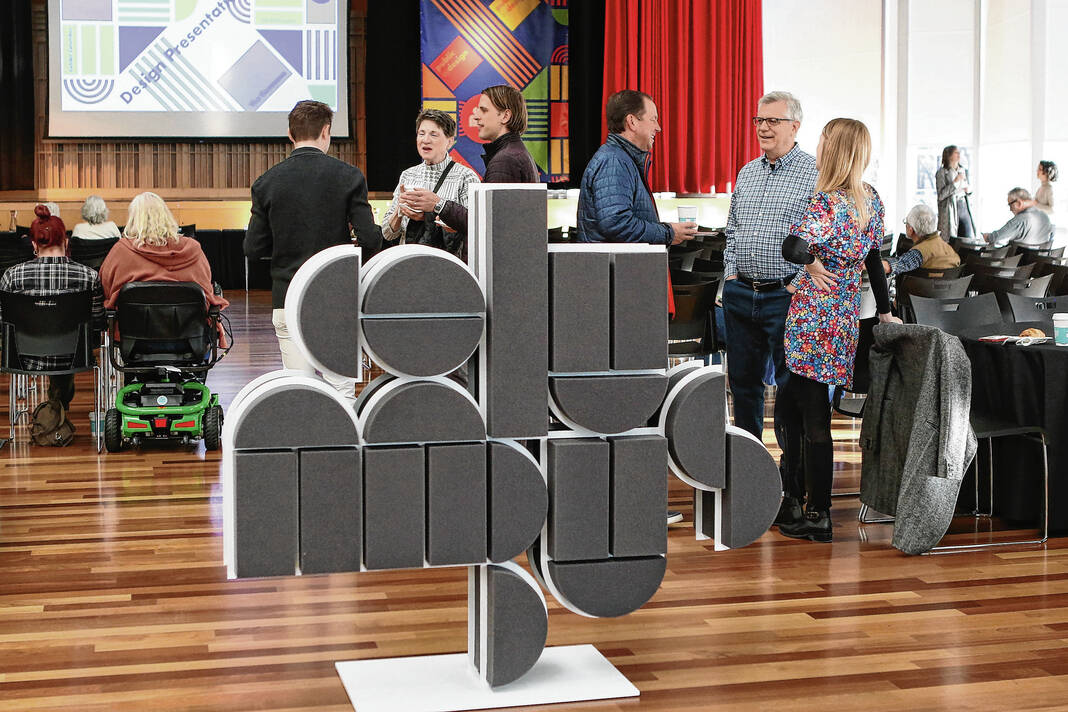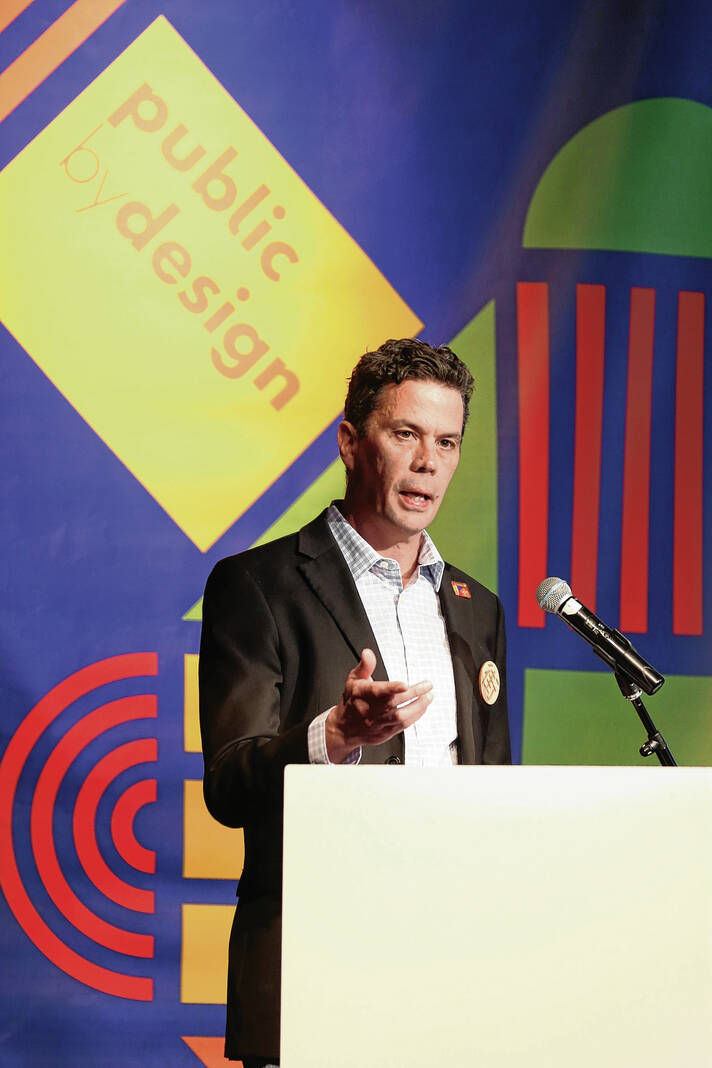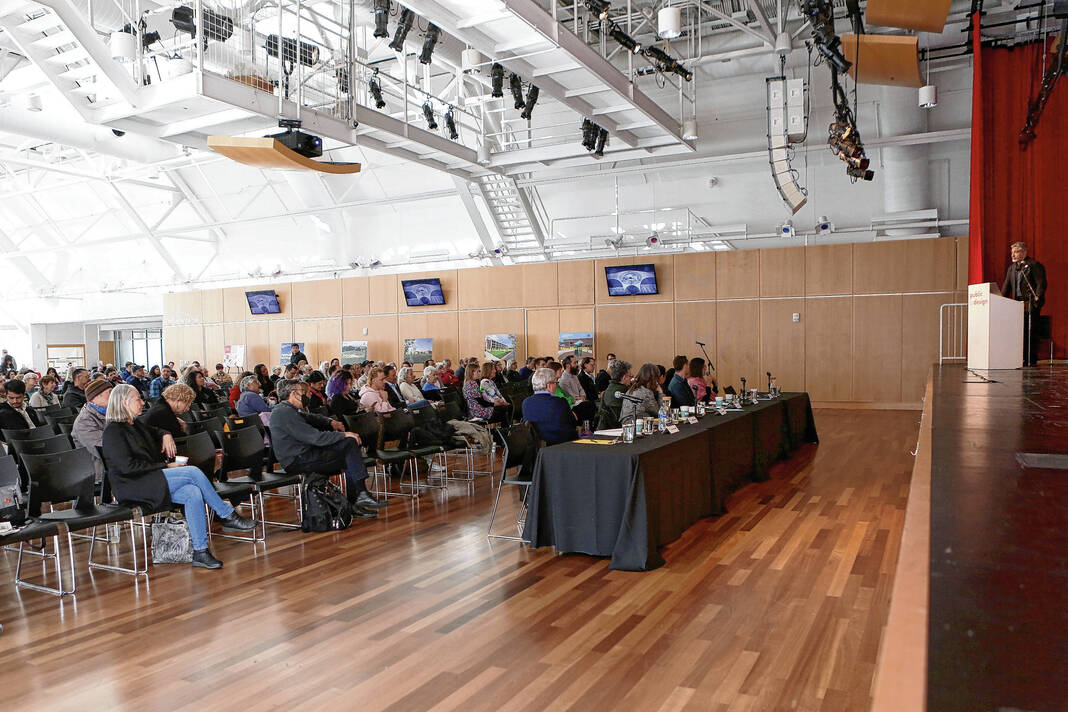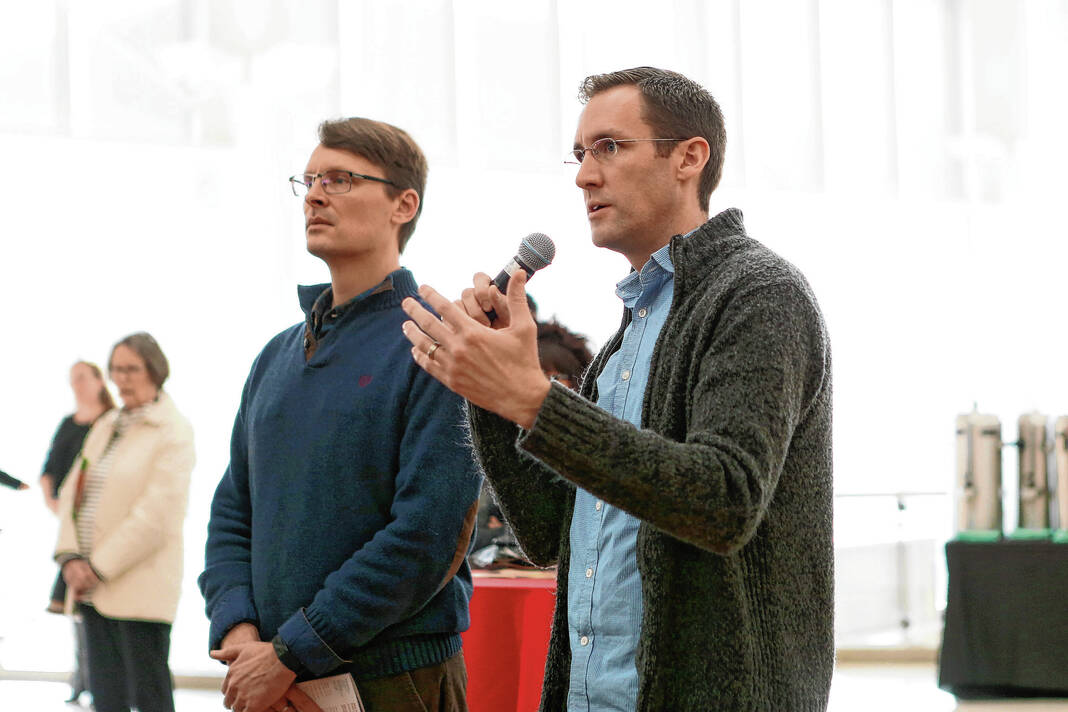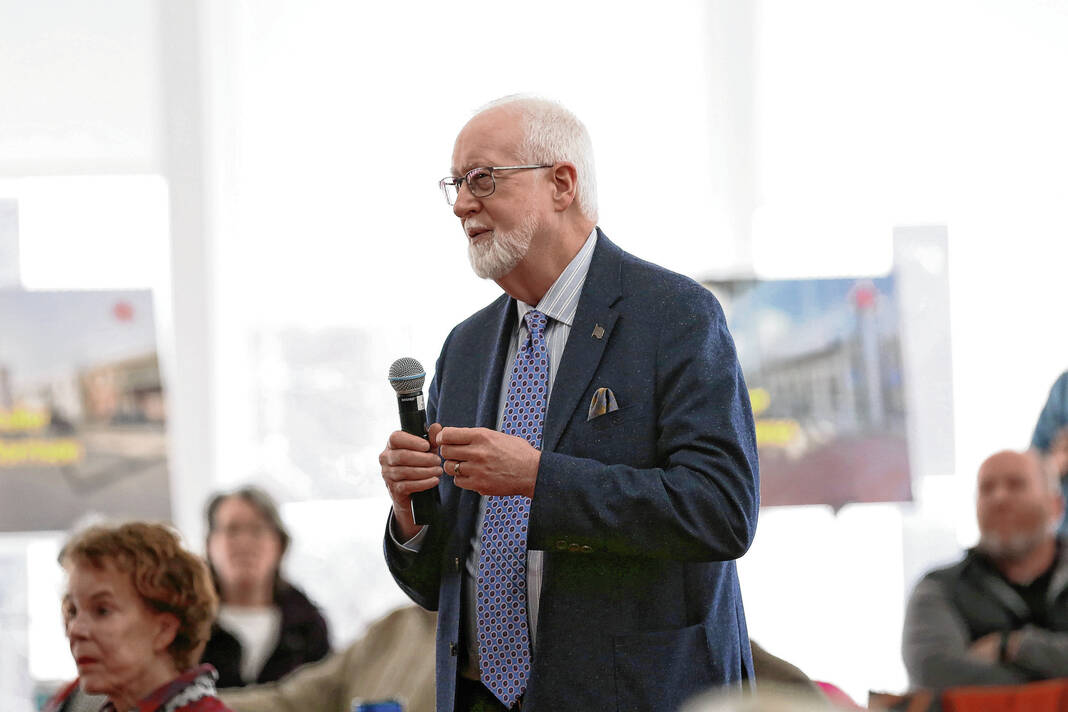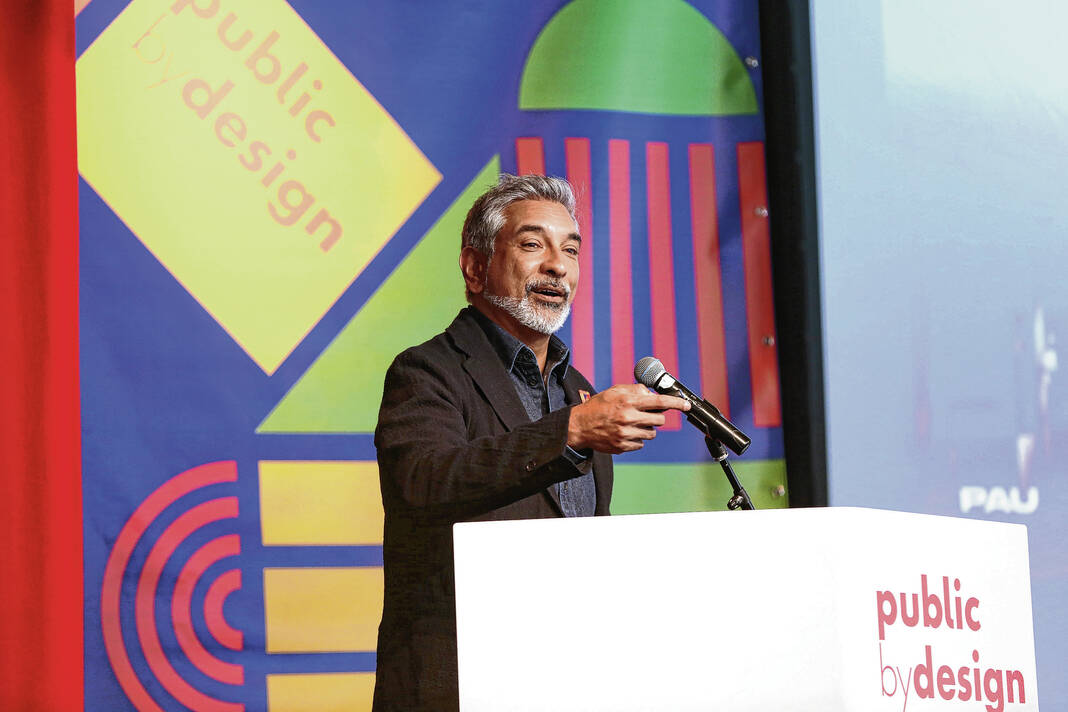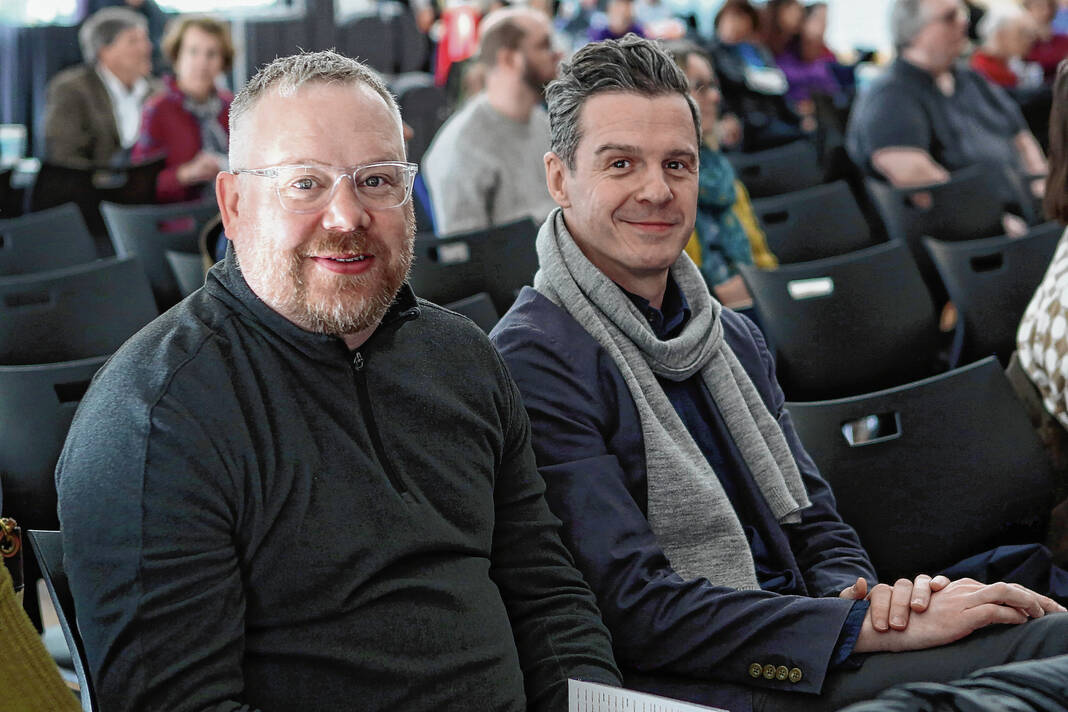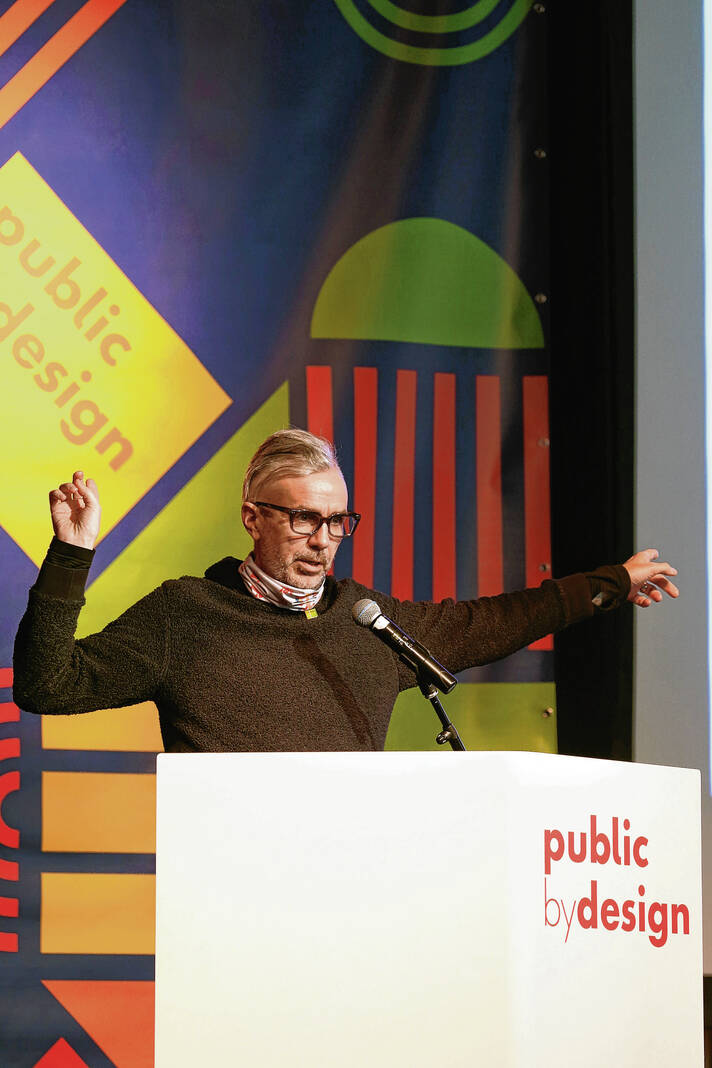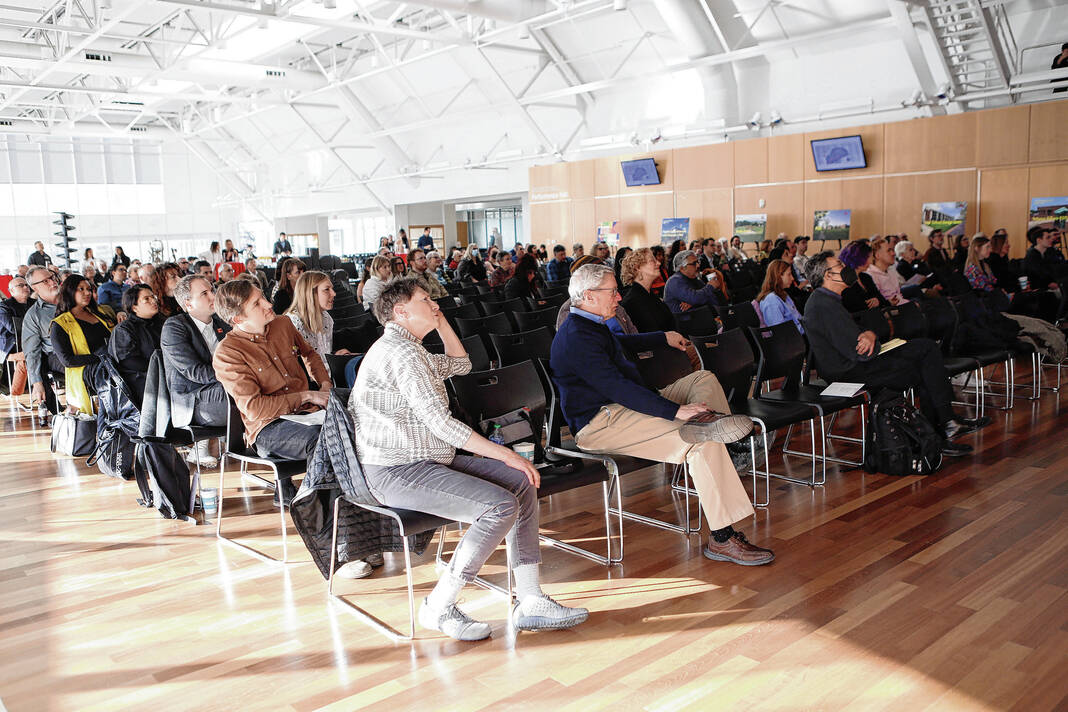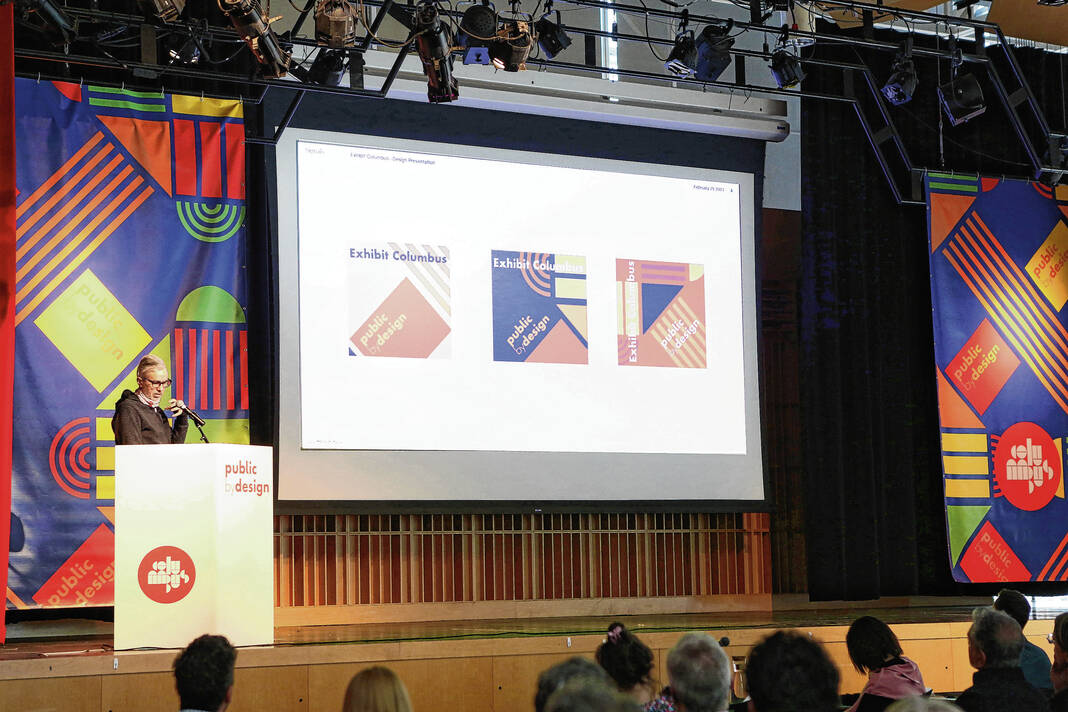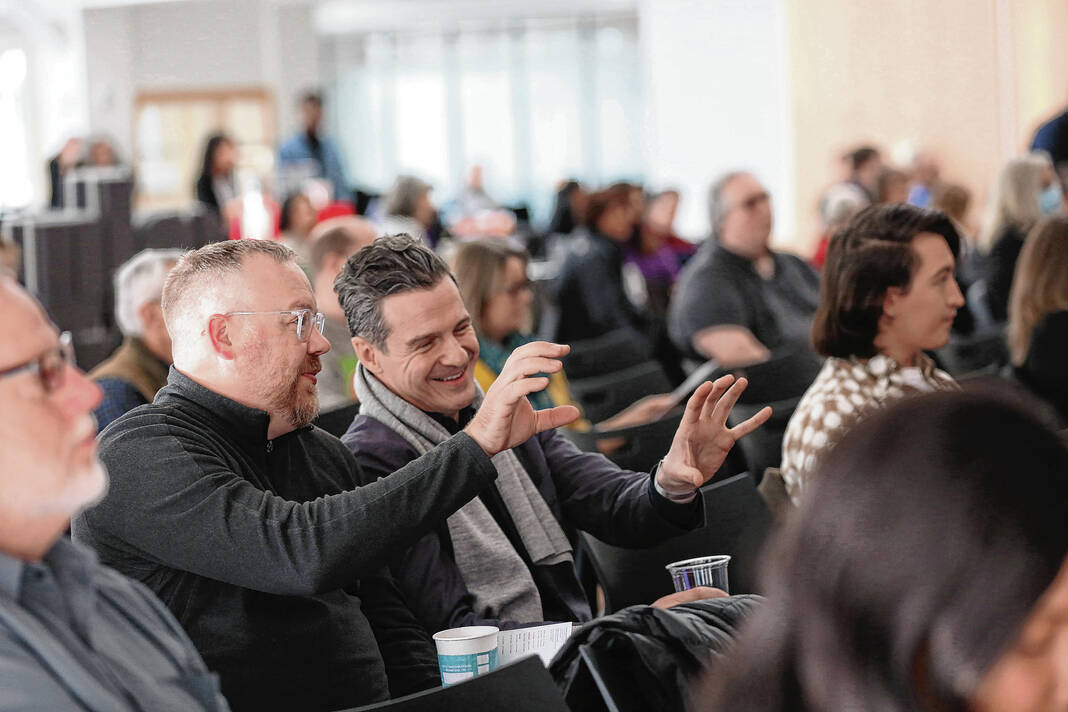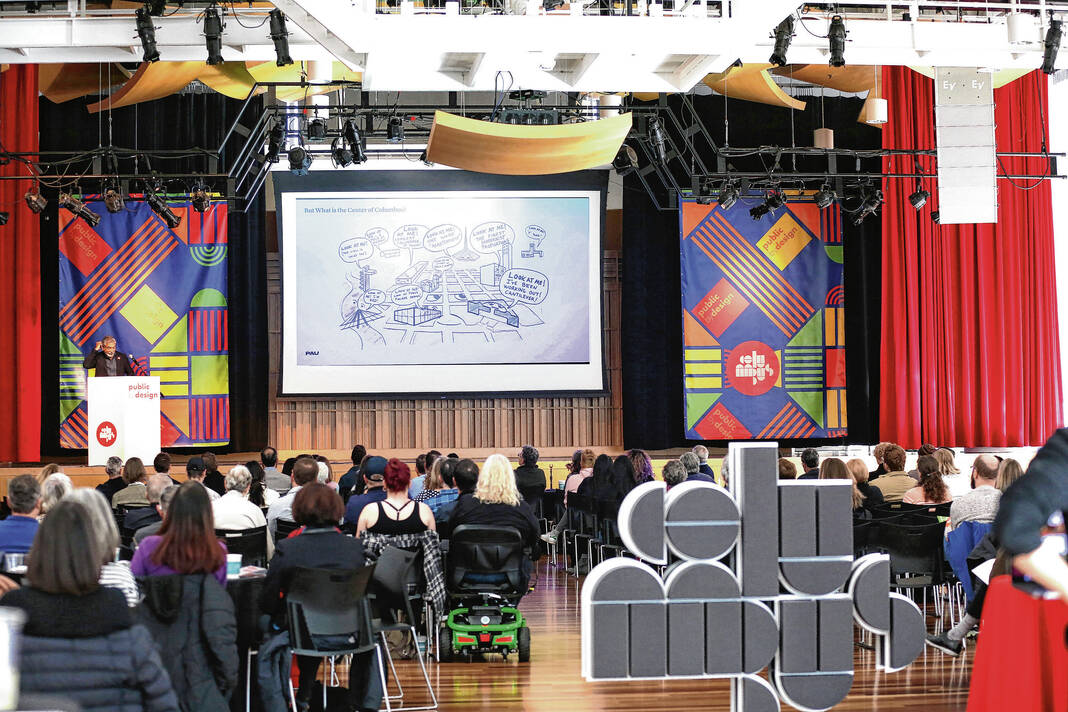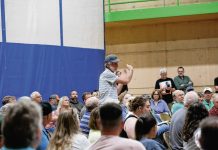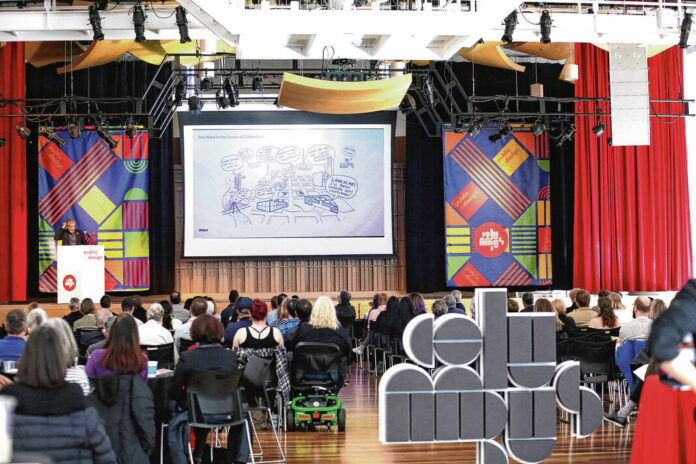
Carla Clark | For The Republic Vishaan Chakrabarti, founder and creative director of Practice for Architecture and Urbanism, a Miller Prize winner, speaks about their design process during the 2023 Exhibit Columbus , Public by Design, presentations at the Commons, Columbus, Ind., Saturday, February 25, 2023.
Columbus’ belly button soon will see a lot of exposure. And it could show that the small city with a lot of skin in the game of Modernist architecture knows very well how to unbutton and unwind.
Such is the partial view of accomplished architect Vishaan Chakrabarti of New York’s Practice for Architecture and Urbanism. He was among the top Miller Prize speakers at Saturday’s Exhibit Columbus Design Presentations at The Commons for the fall exhibition “Public By Design.” The exhibition will feature 13 temporary installations created near spots of significant local structures or landscapes — all with the idea of the new creations being inspired in some way by the existing landmarks.
The four Miller Prize winners are considered the centerpieces of the event slated from Aug. 25 through November.
PAU’s piece will stand at the corner of Fourth and Washington streets downtown — a spot he said local residents in personal meetings, Zoom gatherings and elsewhere repeatedly told him they know as the “belly button” of the city’s downtown.
In Chakrabarti’s presentation, he flashed an image of the circular area of Fourth and Washington hosting a drumming circle during a recent Ganesh festival as just one example of diverse gatherings there.
“We heard again and again from people that they wanted to see a place of repose there,” he said.
So he presented “Interoculos,” a canopy structure that he said is inspired by nearby Zaharakos’ ice cream sundaes and the wigwams of the Miami and Shawnee people who settled Indiana. The canopy, to be made of material still to be determined, will feature a ceiling for projected images and an oculus that seemed to harken to a similar opening in the roof of Eero Saarinen’s North Christian Church.
PAU’s work is just like nearly every other presentation Saturday — still being formed by the public’s questions and suggestions in keeping with the “Public By Design” curatorial theme.
An estimated crowd of about 350 people, matching the crowd size for the pre-pandemic gathering for the 2019 event, attended the day-long affair.
“That’s a great crowd — especially for competing with a sunny Saturday,” said Richard McCoy, executive director of the nonprofit Landmark Columbus Foundation, Exhibit Columbus’ umbrella agency.
Exhibit Columbus is an exploration of community, architecture, art, and design that activates the modern legacy of Columbus. In the past, it has attracted an estimated 30,000 to 40,000 people over a three-month period. Plus, for the first time in decades, it has sparked an architectural zeal among the city’s younger residents posting installation images all over social media.
And it also has generated renewed global publicity for Columbus’ Modernist impact.
Whimsy and play
Saturday’s crowd represented those from teens to some in their mid-80s — local leaders, volunteers, representatives of the arts community, you name it.
“I’m struck by the sense of whimsy and play (in installations),” said local artist Steven Newlin.
That included Tatiana Bilbao ESTUDIO of Mexico City’s Miller Prize presentation on “Designed By the Public” for the Bartholomew County Public Library Plaza at 536 Fifth St. downtown. The installation encourages visitors to freely use a broad collection of objects, furniture, and equipment to build to their own ideas, to allow for all possibilities, and “to embrace the unexpected,” according t0 Bilbao.
The idea: Let the public determine their own way of unwinding and playing.
Library director Jason Hatton, one of the exhibition’s J. Irwin and Xenia S. Miller Prize Community Curators, loved the idea — especially since he and his staff have worked hard in recent years to let the public know that they can check out everything from sewing machines to ukuleles from the library.
“So this is like our outside library of things,” Hatton said. “And to me, it really brings into focus that aspect of connecting our inside with the outside space, and adds to the playfulness of possibilities.”
Mill Race Park
Another Miller Prize designer, Sara Zewde of New York City’s Studio Zewde, unveiled her Mill Race Park installation “Echoes of the Hill,” referring to the large slope in the park. Zewde is a former student of Houston landscape designer Michael Van Valkenburgh, who designed the park 30 years ago.
Her installation includes a series of red frames mirroring the hill and in effect creating a circle for a range of activities.
“The hill has just this incredible presence,” Zewde said.
The fourth Miller Prize designer, PORT, based in Philadelphia and Chicago, presented “The Plot Project,” also aimed for Mill Race Park. Christopher Marcinkoski of the firm called Mill Race Center for active adults, “probably one of the coolest things in town.”
So PORT’s project will highlight the center with a variety of 12 plot plantings in the 1.5-acre arc in front of the structure. The architect called the effort “rewilding experiments.”
Interior design photographer Robert Granoff of Rossville was flabbergasted that the gathering with so much creativity and inspiration was free. It brought him to Columbus for the first time — and he said the creativity of the installations will bring him back with his wife and two young children for the exhibition.
“I can’t think of another place in the world with such an incredible focus on design,” he said. “I’ve been meaning to come down here for more than two years.”

